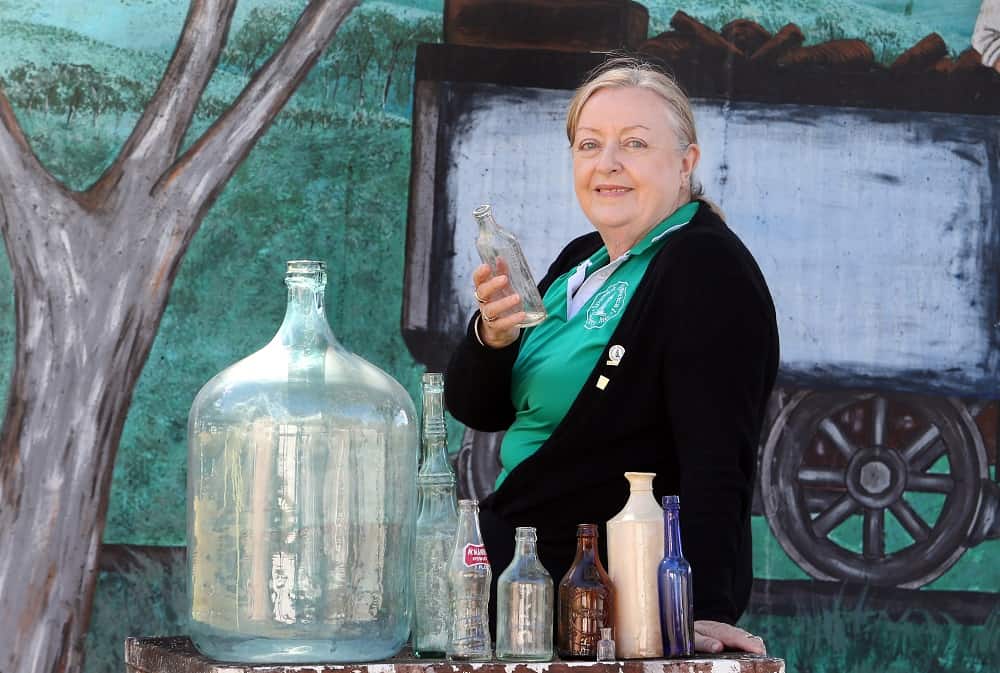
Collecting is something anyone can do and collecting bottles is a cheap, easy to find and an interesting item to collect.
The first thing you will notice about the Ipswich Historical Society’s bottle display is that there are a lot of local ones.
We asked bottle researcher Olivia McMahon to tell us about some of them.
“The shape, colour and contents bring back memories,” Ms McMahon said
“It evokes times past. People might say ‘that was my favourite soft drink. We had every Sunday when we were allowed to have a bottle of McMahons sarsaparilla on the table’.”
The Ipswich Historical Society welcome donations and their displays are regularly rotated.

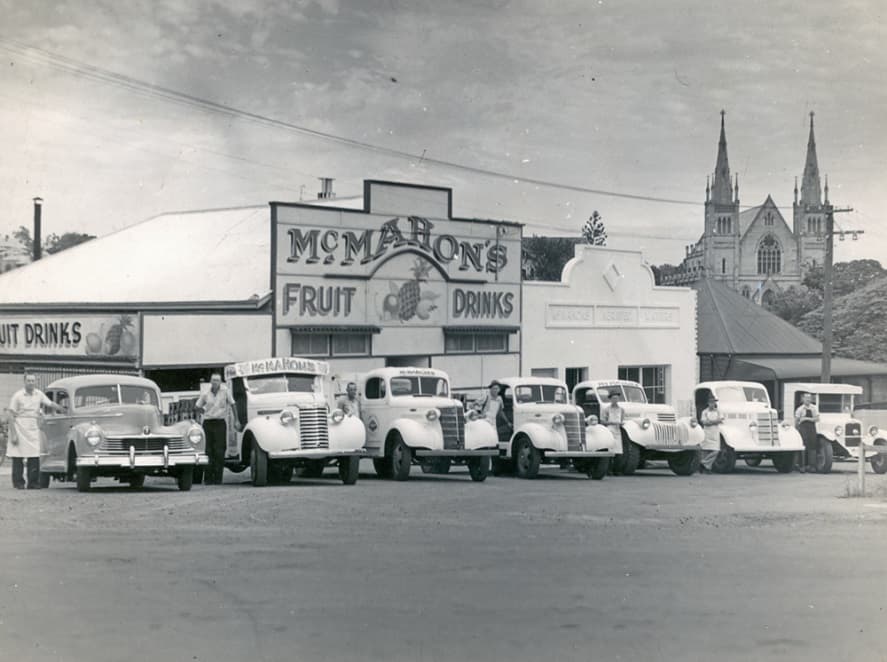
McMahon’s soft drink bottle
McMahon’s Fruit Drinks was started by Frank McMahon in 1934 in a small rented building in West Street, Ipswich.
With eight pounds in the bank and four pounds needed to connect electricity to the premises, Frank began his business with outdated machines and a large amount of hope.
Combining ingredients, Frank would then bottle the mixture using his first bottling machine which filled only one bottle at a time. The price of a shilling would get you three large bottles of soft drink.
As war broke out in 1939, Frank was fortunate enough to land an offer to supply soft drinks to the Army and later the U.S. forces at Amberley which enabled him to purchase the factory premises that he had been renting.
In 1977 after the resulting flooding and damage of the Woodend premises in the 1974 floods, Frank’s two sons, Jim and Peter moved the soft drinks business to the newly established Wulkuraka industrial estate.
In its prime, the McMahon’s business became the second biggest home delivery operation for soft drinks in Queensland and were early pioneers in terms of recycling because of their returnable bottles process. The Factory was sold to ‘Just Juice’, then ‘Pepsi Cola’ and then to ‘Schweppes’.
Barnes amber cordial bottle
“You can’t make clear glass without adding certain additives. Iron, sulphur and carbon is added to create amber colour – which delays the process for brewing like beer, horehound and ginger beer,” Ms McMahon said.
“As a coincidence my name is McMahon but I am no relation and I ended up living in Mr Barnes’s old family home.”
This article (below) was printed in the Queensland Times, Tue 19 Dec 1916.
IPSWICH AERATED WATER CO.
The premises in East Street occupied by this firm, of which Mr. T. Barnes is the proprietor, carefully occupied in executing orders for the festive season.
An inspection of the premises gives one a splendid idea of the extensiveness of the business transacted. As a manufacturer of soft drinks and cordials, their name is widely known, and their speedy execution of orders has won for them a business that would be hard to excel.
The firm make a speciality of stone ginger beer, sarsaparilla, and dry ginger ale, which are amongst the best thirst-quenchers. Brewed vinegar of excellent quality can be purchased in any quantity. Country orders are attended to speedily and forwarded by train, while orders for the household will be received at the factory.
Courtesy: Trove – National Library of Australia.
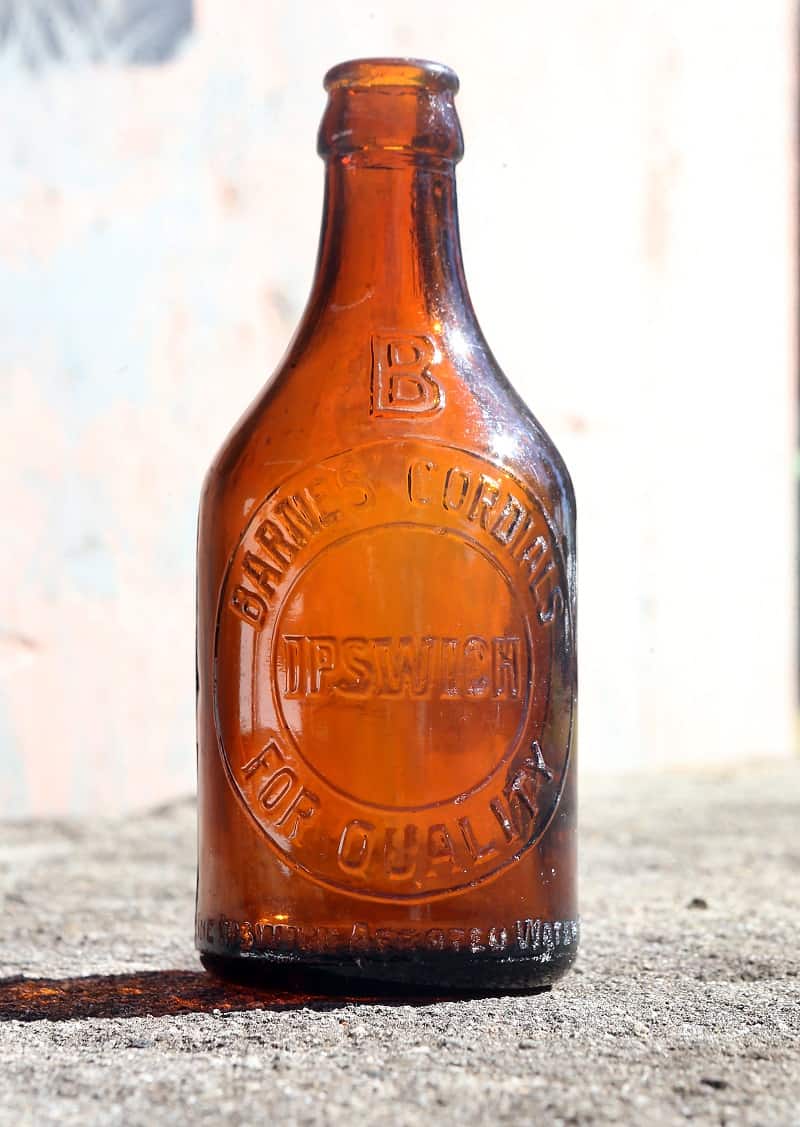
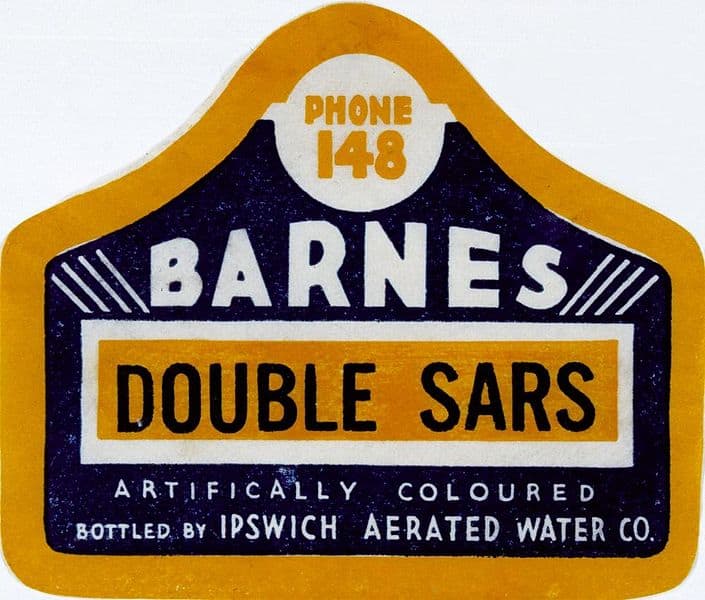
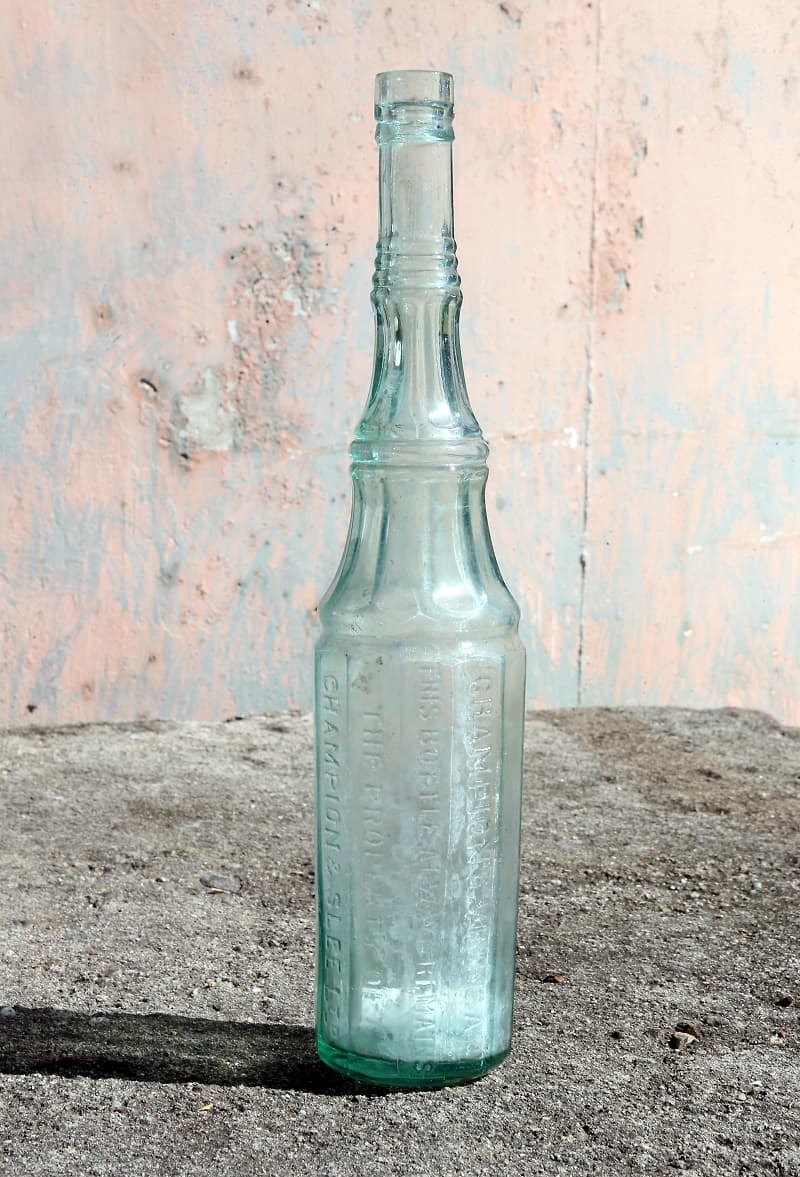
Champion’s vinegar
This vinegar bottle is rather tall with a green tinge to the glass. CHAMPION’S VINEGAR is stamped on the side.
It’s from London and the company has been trading since the 1700’s but this bottle is from the early 1900’s.
“This bottle is important and quite common in the 1800’s. In an age before refrigeration, vinegar was a much more important commodity than it is today, due to its preservative effect on foods,” Ms McMahon said.
“It was used locally on country properties for preserving meats. It’s unusual to get them complete as they are such a tall bottle. It’s also hard to find with the stopper and paper label.”
PJ O’Donnell Chemist Goodna
Good containers were an essential tool for storing preparations by the pharmacist.
A lot of the tinctures, elixirs, salves, and medicines were made locally in house.
The pharmacist would mix them up and send them off to be bottled.
“A lot chose embossed lettering to designate their product. They usually had a paper label with the patient’s instruction for a patient from the doctor, much like we do now,” Ms McMahon said.
“This is a PJ O’Donnell Chemist bottle from Goodna. They have used embossed lettering to designate their product.”
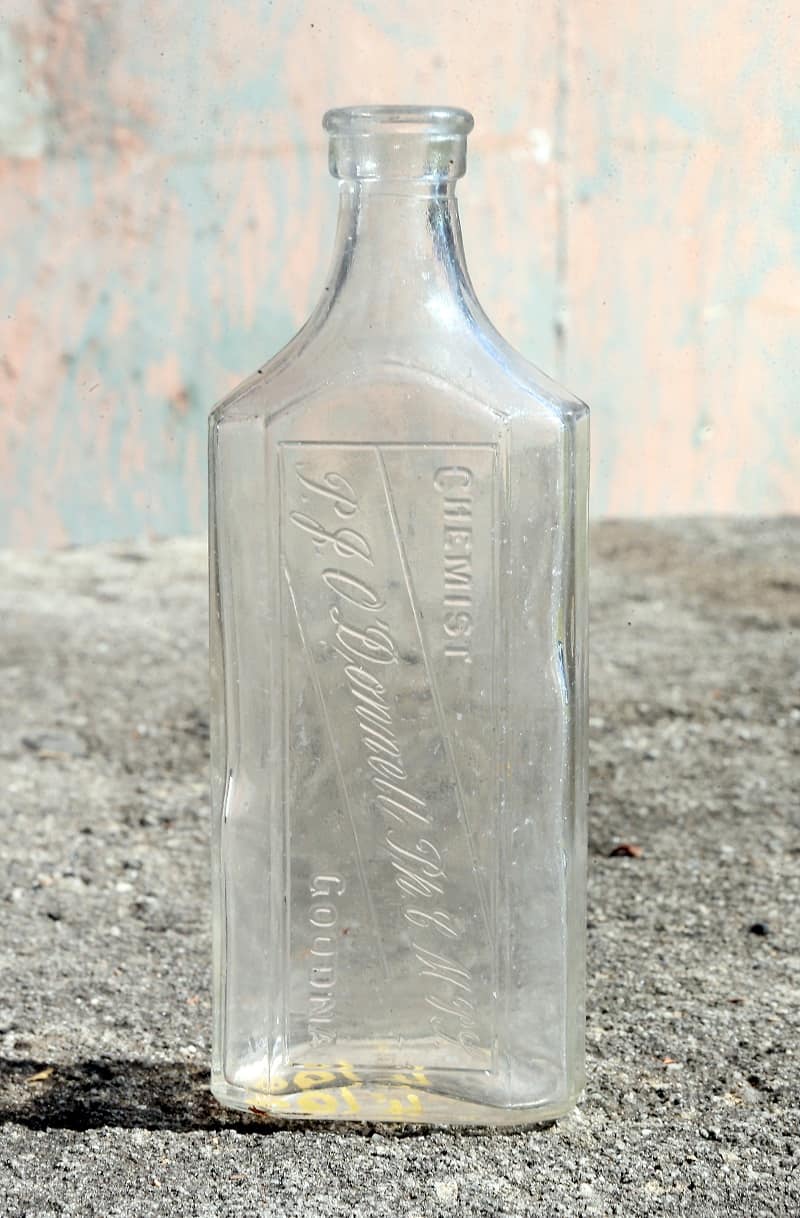
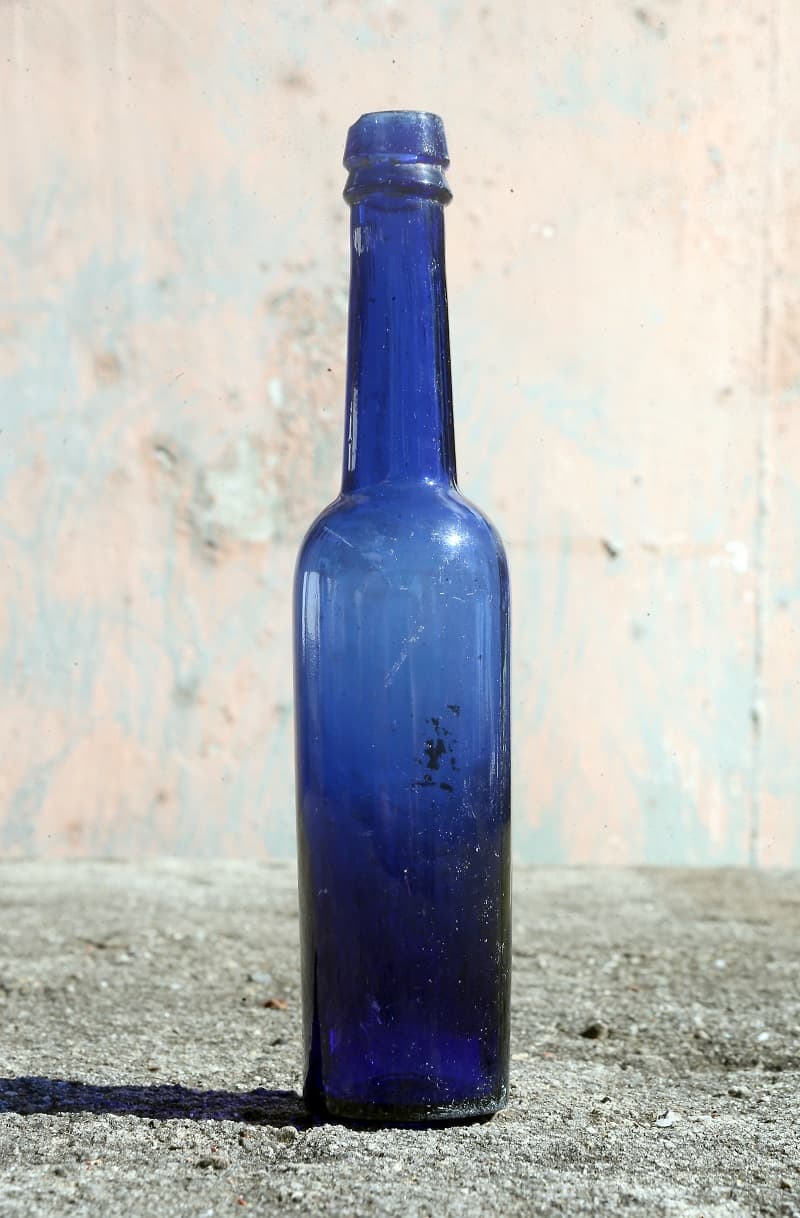
Cobalt blue bottle
The colour is created by adding cobalt oxide to create the distinctive blue purple colour. Pharmaceutical bottles were commonly made with coloured glass to protect the contents from light.
The blue colour was generally an indication that the contents was something that should be treated with caution and were often also embossed with ‘not to be taken’ on the bottle. Poison bottles also often had parallel lines or cross hatch patterns to be felt in the dark.
Coloured glass bottles were used for the storage and dispersion of potentially poisonous medicines. Glass is virtually inert and impermeable, making it the most stable of all packaging materials.
“These would also often have paper labels attached but it is rare to find them intact as most have deteriorated over time,” Ms McMahon said.
“Our cobalt blue bottle example usually contained castor oil in five ounce sizes.”
Stoneware with pouring lip
“This stoneware bottle has a pouring lip and would have had a cork stopper. We suspect it was for ink,” Ms McMahon said.
“This type of bottle was common in local government departments. The administrators had to file reports and they would refill. The powered ink would have to be prepared in the right proportion and quantity.
“Some people might remember the classroom ink monitor at school would make it up. Then go to each desk and fill up the inkwells.”
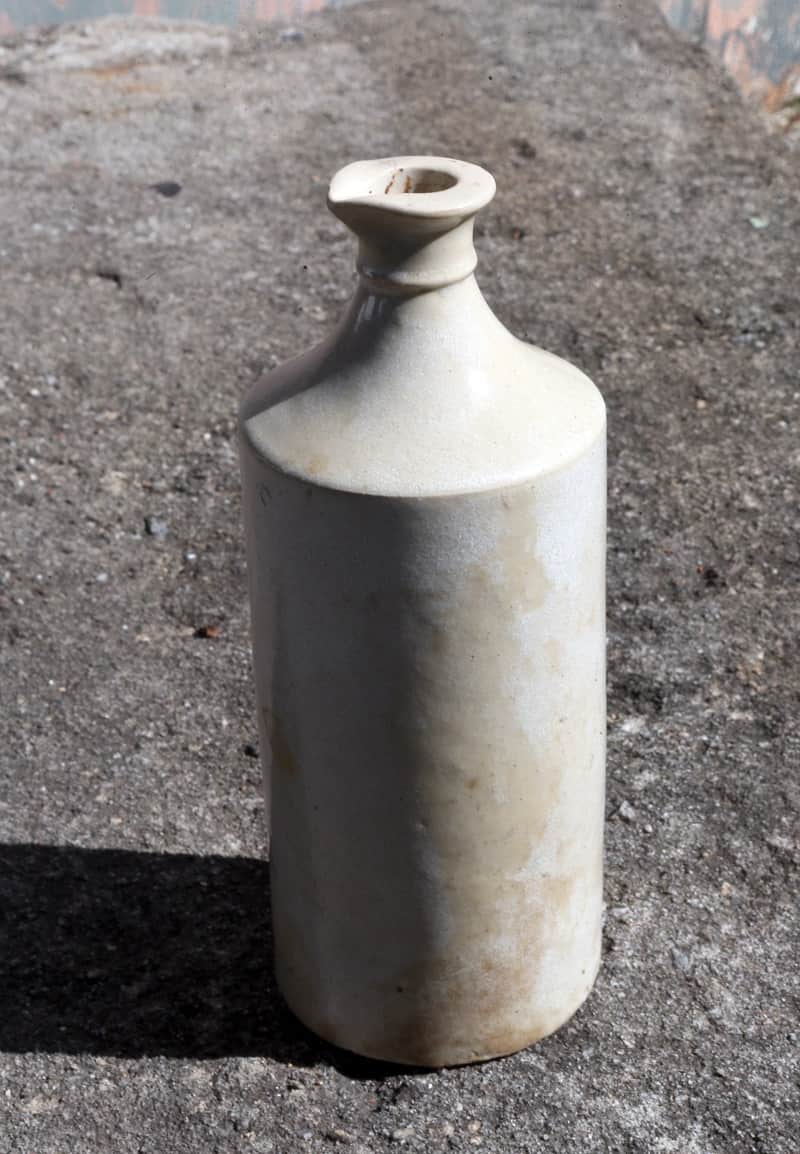

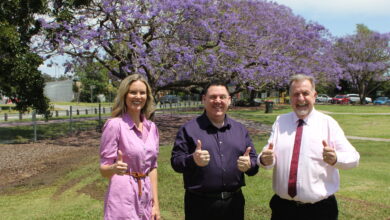
3.5
5